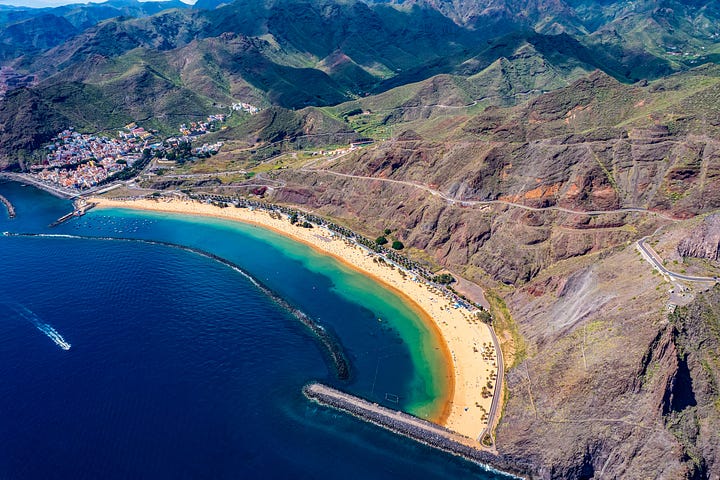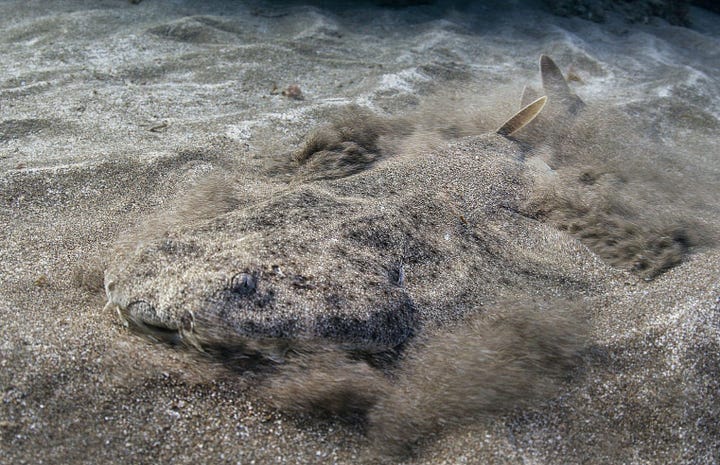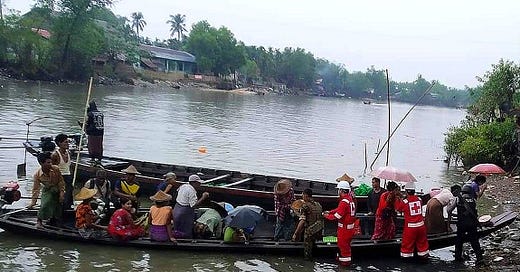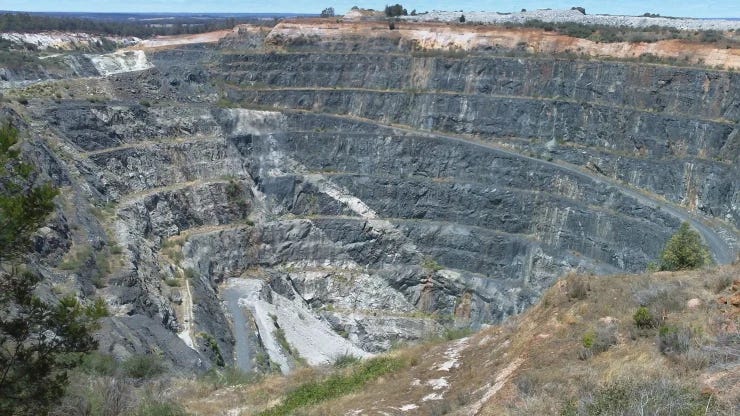The Weekly Anthropocene, June 7 2023
Angelsharks in the Canary Islands, the American clean manufacturing boom, cyclone preparedness in Bangladesh, and more!
Canary Islands


In the 1970s, local authorities in Spain’s Canary Islands imported 240,000 tons of sand from Western Sahara to create a new artificial beach. The Playa de las Teresitas is now a major tourist attraction-and has become a haven for a critically endangered fish species. Angelsharks (Squatina squatina) were devastated in the 20th century by overfishing throughout European waters. Now strongly protected by EU laws, they have flocked to the imported sand of Playa de las Teresitas, which has become a major nursery site for the species and a hub of “shark diving” ecotourism. Another great example of successful human-wildlife coexistence in the Anthropocene!
United States
The Inflation Reduction Act-driven boom in US clean energy manufacturing, as widely reported on by this newsletter, is continuing to roar ahead.
Just under $80 billion in investment across nearly 100 new American clean energy manufacturing projects was announced between the IRA signing in August 2022 and the end of May 2023, mostly for solar panel, battery, and EV plants.
Much of this is in a new Eastern “battery belt” region stretching from Michigan to Georgia, revitalizing historic manufacturing communities.
Wind turbine manufacturing in the US is making a comeback as well, after a downturn in recent years as many companies moved to countries with lower labor costs.
And displaced coal miners are finding new jobs in clean energy manufacturing, with one battery plant in West Virginia committing to hire UMWA union miners for the vast majority of jobs.
Western Australia
In the mining-heavy state of Western Australia, the critical battery material that is lithium is about to overtake all fossil fuels combined as a source of revenue, sparking a “lithium boom.” Over of half the world’s lithium came from Western Australia in 20211, and the state’s reserves will likely become still more important as global decarbonization progresses.
Bangladesh
On May 14, 2023, the climate change-supercharged Cyclone Mocha struck Bangladesh and Myanmar, but the death toll was kept surprisingly low, thanks to thousands of people’s hard work. The Associated Press reports that robust local early warning and preparedness programs “likely saved thousands of lives.” Bangladesh, which has developed a massive network of shelters and early warning systems in recent years, managed to move 700,000 people to cyclone shelters before the storm hit; a logistical feat equivalent to moving more than the entire population of Boston, Massachusetts. The death toll is still very unclear but seems to be in the low- to mid-hundreds (perhaps around 400 or 500), mostly in chaotic and civil war-torn Myanmar.
Hundreds of deaths are of course a horrific tragedy, but placed in historical context, this is amazing progress. For comparison, when the Bhola cyclone struck Bangladesh (then East Pakistan) in 1970, at least 300,000 people died2. And Bhola was a weaker storm, Category 4-equivalent compared to the Category 5-equivalent Cyclone Mocha. When a similar Category 5 cyclone hit Bangladesh in 19913, about 138,000 people died. When Cyclone Amphan (also Category 5) hit Bangladesh in 2020, only 128 people were killed.
The same pattern is repeated all over the world, for disasters like floods, droughts, and even earthquakes as well as storms. (Check out the awesome article that’s the source of the above chart from Our World in Data). Satellites tracking weather are providing vital early warnings, more and more people have phones to receive those early warnings, economic development is making people richer and more able to protect themselves and move if necessary4, and governments, NGOs, and local communities are integrating years of lessons about how best to prepare for disasters.
The key takeaway is this: climate change is making storms, floods, and droughts stronger, but human ingenuity, technological development, and community resilience are making them less deadly. Climate disasters are awful, causing lots of economic damage5, leaving people homeless, and still causing many deaths6. But even as the atmosphere grows more turbulent, humans are less likely to die from natural disasters than in most of recorded history. That’s progress worth fighting for.
Although much of the lithium processing happened in China. See my interview with economist Noah Smith, where we discuss China’s diminishing lead in mineral processing.
Back then, Bangladesh was East Pakistan: the Pakistani government’s incompetent response to Bhola was a major factor in Bangladesh declaring independence.
Weirdly, it seems to have no other name than “the 1991 Bangladesh cyclone.” Another fun fact: Operation Sea Angel, a US-led multinational naval humanitarian response effort to the 1991 Bangladesh cyclone, is credited with saving 200,000 lives.
Bangladesh is a major economic development success story; the country has grown much richer in recent years.
Economic damage from disasters is actually rising as death tolls are falling, and for some of the same reasons: as countries get richer, they’re more likely to be able to get their citizens out of harm’s way, but they’re also more likely to have more valuable stuff to be destroyed.
For example, the climate change-fueled extreme drought in Somalia that likely killed 43,000 people in 2022, made worse by Somalia’s poverty and ongoing civil war.








I read before about some of the work being done in places like Bangladesh to protect people during cyclones. They're still terrible and cause a huge amount of damage, but the work protecting lives is a powerful reminder that positive changes can happen. PS angel sharks are cool. Like a kind of intermediate between a shark and a ray.